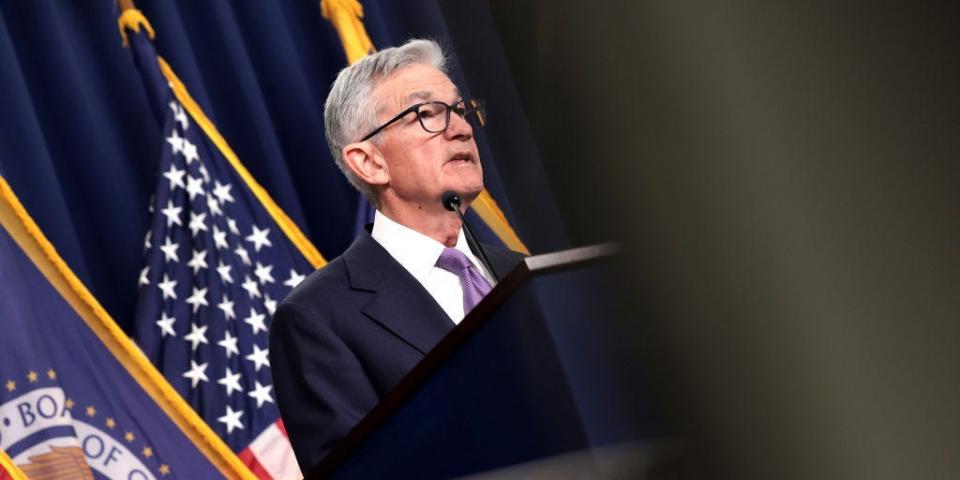Market hopes for big cuts this year are unlikely to pan out, Deutsche Bank wrote.
Today’s economy is similar to 1995, when cuts came in below market predictions.
A productivity cycle from AI could keep the US from falling into a recession, keeping rates up.
Markets may find that the anticipated rate-cutting cycle falls short of expectations, Deutsche Bank’s George Saravelos wrote on Friday.
That’s not so much due to its timing, but rather because interest rates won’t fall as aggressively as predicted. Futures markets forecast five to six cuts this year, slashing the fed fund rate by over 100 basis points by the year’s end.
“In a soft landing scenario, it is reasonable to expect that the Fed cuts down to nominal neutral,” Saravelos wrote, referring to the rate level that neither restricts nor expands the economy. “The problem is that no-one knows where this theoretical rate is in real-time.”
Given this uncertainty, it’s likely that the Federal Reserve is headed for a replay of 1995, he wrote. That year, the central bank cut rates by 75 basis points, below hopes for a 200 basis point reduction.
As with today’s economy, receding inflation, labor growth, and economic strength factored into the modest adjustment nearly thirty years ago. The tech cycle of the mid-nineties kept up the economy, and worries of a major slowdown never manifested.
“Can this experience be repeated again? Artificial Intelligence stands out as one technology that could help drive a new productivity cycle. We have also written about the US economy’s dramatically reduced interest rate sensitivity,” Saravelos wrote.
So far into the year, the Fed has paused rates in the range of 5.25%-5.50%. At its latest FOMC meeting, it indicated that confidence in disinflation needs to strengthen before policy pivots.
Big-cut arguments may have lost some of their edge after January’s jobs report, where new positions nearly doubled expectations. And though some still see a slowdown risk ahead for the broader economy, others have pointed to continued spending strength as a tailwind.
Read the original article on Business Insider
Credit: Source link




